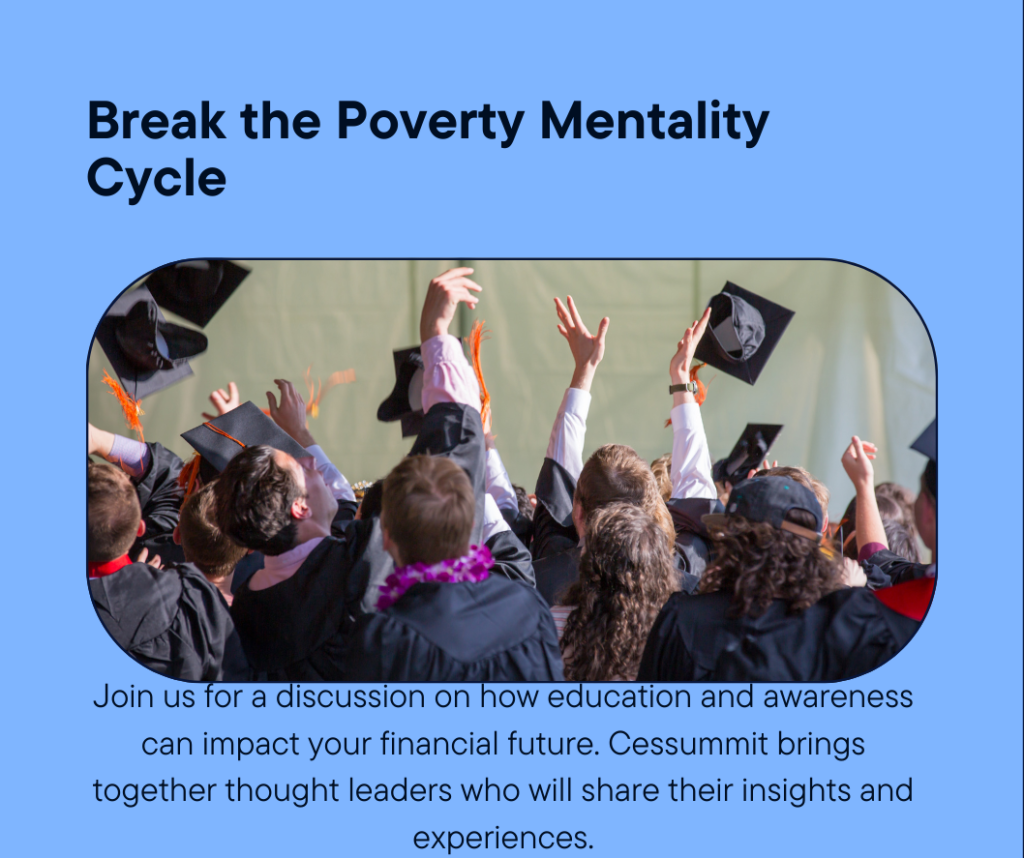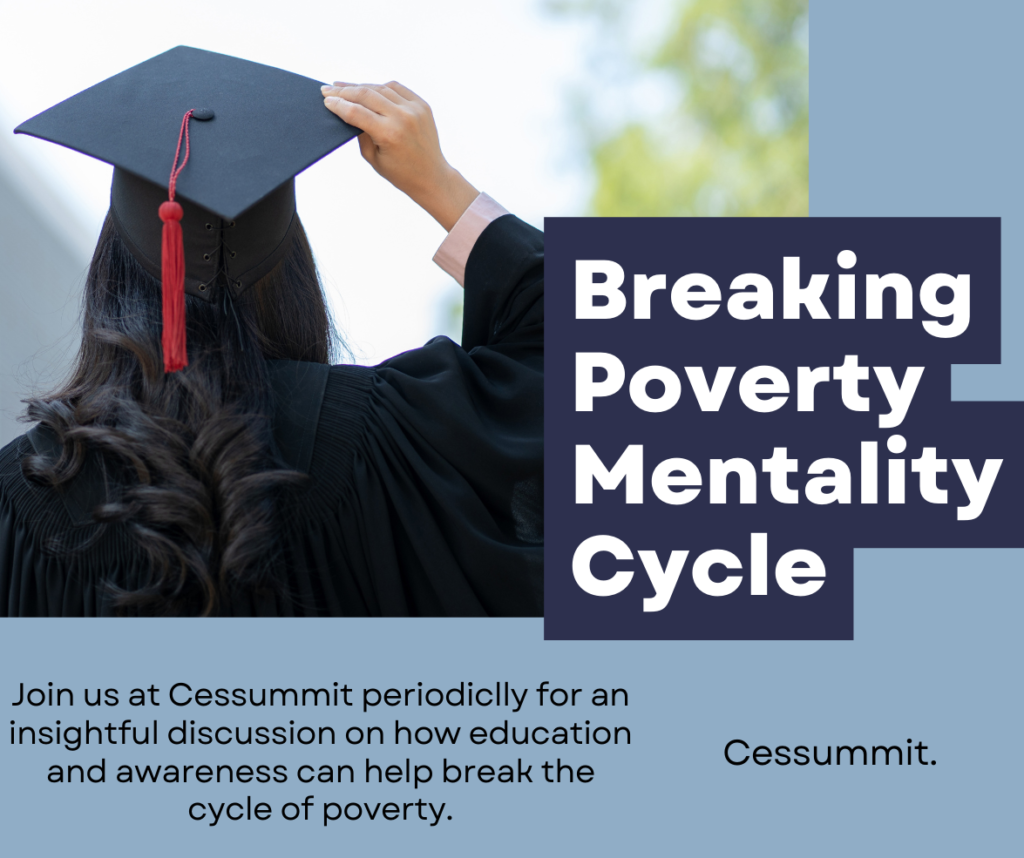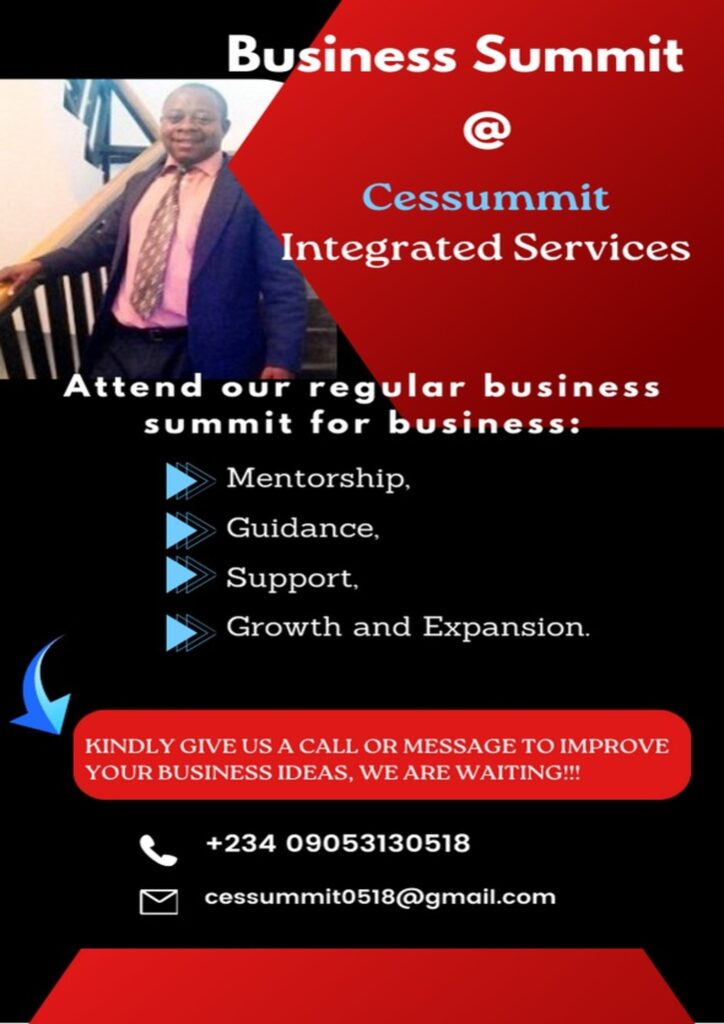
How to Break Poverty Mentality Cycle: The Role of Education and Awareness
How to Break Poverty Mentality Cycle: The Role of Education and Awareness – If you need to break free from the cycle of poverty mentality, you require a transformative approach rooted in education and heightened awareness. This is because this journey towards financial empowerment and mental liberation hinges on education’s pivotal role in reshaping perspectives and fostering a profound understanding of one’s capabilities. Now, read more about How to Break Poverty Mentality Cycle: The Role of Education and Awareness in this article.
So, by delving into the intricacies of how education and awareness intersect, we unravel the key elements essential for breaking the shackles of poverty mentality and paving the way towards a mindset of abundance and possibility.
Contents
- 1 How to Break Poverty Mentality Cycle: The Role of Education and Awareness
- 1.1 The Role of Education and Awareness on Poverty Mentality
- 1.2 How to Break Poverty Mentality Cycle: The Role of Education and Awareness
- 1.3 Recommendations:
- 1.4 Individuals:
- 1.5 Educators:
- 1.6 Policymakers:
- 1.7 Financial Institutions:
- 1.8 How to Break Poverty Mentality Cycle: The Role of Education and Awareness
- 1.9 How Cessummit offers helps:
- 1.10 Read more on How to Break Poverty Mentality Cycle: The Role of Education and Awareness
- 1.11 Concluding:
- 1.12 Share this:
- 1.13 Like this:
How to Break Poverty Mentality Cycle: The Role of Education and Awareness
Here are other topics covered in this series. These include; How Poverty Mentality Makes No Money, The Impact of Poverty Mentality on Financial 2024 Decision making, How Poverty Mentality Impacts Financial Prosperity in 2024, and How to Break Poverty Mentality Cycle: The Role of Education and Awareness.
The Role of Education and Awareness on Poverty Mentality
This article emphasizes the importance of financial education and awareness in combating poverty mentality. It explores initiatives and programs that promote financial literacy and mindset development to empower individuals to make informed and strategic financial decisions. Get more facts about How to Break Poverty Mentality Cycle: The Role of Education and Awareness in this article.
Financial education and awareness play a pivotal role in combating poverty mentality by equipping individuals with the knowledge and skills necessary to make informed financial decisions and break free from limiting beliefs. Here are several reasons highlighting the importance of financial education and awareness in this context:
Empowering Decision-Making:
Financial education empowers individuals to make informed decisions about their finances. Understanding basic financial concepts, such as budgeting, saving, investing, and debt management, provides a foundation for making sound choices contributing to long-term financial well-being. Gon on reading How to Break Poverty Mentality Cycle: The Role of Education and Awareness.
Breaking the Cycle of Ignorance:
Lack of financial education often perpetuates a cycle of financial ignorance, where individuals may repeat the same patterns of poor money management observed or experienced in their upbringing. Financial education breaks this cycle by offering new insights and strategies for building wealth.
Cultivating a Positive Mindset:
Financial education helps shift the mindset from one of scarcity to one of abundance. Learning about opportunities for wealth creation, the power of investing, and the importance of financial planning instills confidence and optimism, contributing to a more positive outlook on personal finances.
Enhancing Financial Literacy:
Financial literacy, gained through education, enables individuals to understand and navigate the complexities of the financial world. This includes knowledge about interest rates, credit scores, investment options, and the impact of economic factors on personal finances. This too is important – How to Break Poverty Mentality Cycle: The Role of Education and Awareness
Building Confidence and Self-Efficacy:
Financial education builds confidence and self-efficacy in managing money. When individuals understand how to create and stick to a budget, save for goals, and invest wisely, they gain a sense of control over their financial destiny, reducing feelings of helplessness associated with the poverty mentality.
Encouraging Goal Setting:
Financial education encourages individuals to set realistic financial goals and develop plans. This goal-oriented approach shifts the focus from day-to-day survival to long-term aspirations, fostering a proactive and forward-thinking mindset.
Promoting Responsible Borrowing:
Awareness about responsible borrowing is a crucial aspect of financial education. Understanding the implications of debt and how to manage it responsibly helps individuals avoid the pitfalls of excessive borrowing, preventing the accumulation of debt that can contribute to poverty mentality.
Preventing Financial Exploitation:
Financial education equips individuals with the knowledge to recognize and avoid financial scams or exploitative practices. Awareness of common pitfalls and fraud prevention measures enhances financial resilience and protects against potential setbacks.
Creating a Culture of Saving and Investing:
Financial education promotes the importance of saving and investing for the future. Learning about the compounding effect of investments encourages individuals to start saving early, fostering a culture of financial preparedness and long-term wealth accumulation. Yes, see more on How to Break Poverty Mentality Cycle: The Role of Education and Awareness.
Fostering Economic Mobility:
Access to financial education contributes to greater economic mobility by providing individuals with the tools to improve their financial situations. It helps break down barriers to entry in various economic sectors and opens up opportunities for career advancement and entrepreneurship.
Supporting Informed Financial Choices:
Informed financial choices contribute to overall financial stability. Financial education enables individuals to navigate life events, such as homeownership, retirement planning, and major purchases, with a clear understanding of the potential financial implications.
How to Break Poverty Mentality Cycle: The Role of Education and Awareness – In summary, financial education and awareness are integral components in the fight against poverty mentality. By providing individuals with the knowledge and skills to make informed financial decisions, financial education contributes to a positive mindset, empowers individuals to take control of their financial futures, and fosters a culture of economic well-being.
How to Break Poverty Mentality Cycle: The Role of Education and Awareness
Recommendations:
Furthermore, addressing and mitigating the impact of poverty mentality on financial prosperity requires a collaborative effort from individuals, educators, policymakers, and financial institutions. So, here are some recommendations for each stakeholder group:
Individuals:
Invest in Financial Education:
Take proactive steps to educate yourself about personal finance, budgeting, and investment strategies. Attend workshops, read relevant books, and seek online resources to enhance financial literacy.
Engage in Mindset Shifting Practices:
Adopt practices that promote a positive mindset, such as gratitude journaling, positive affirmations, and visualization exercises. Cultivate a mindset of abundance and challenge limiting beliefs about money and success. This is How to Break Poverty Mentality Cycle: The Role of Education and Awareness
Set and Prioritize Financial Goals:
Establish clear financial goals and develop a plan to achieve them. Prioritize saving, investing, and building an emergency fund. Setting and achieving financial goals can contribute to a sense of accomplishment and break the cycle of scarcity.
Seek Professional Financial Guidance:
Consult with financial advisors or mentors to gain personalized advice and guidance. Professionals can offer insights, identify opportunities, and help develop a tailored financial plan that aligns with your goals.
Participate in Community Support Groups:
Join community groups or support networks that focus on financial empowerment. Sharing experiences, insights, and strategies with others who are on a similar journey can provide valuable encouragement and motivation.
Educators:
Incorporate Financial Literacy in Curricula:
Integrate financial literacy education into school curricula at all levels. Equip students with practical knowledge about budgeting, saving, investing, and making informed financial decisions. Trch more about How to Break Poverty Mentality Cycle: The Role of Education and Awareness.
Promote Real-World Experiences:
Provide students with opportunities for real-world financial experiences, such as budgeting simulations, investment games, and entrepreneurship programs. Practical applications enhance learning and prepare students for financial challenges.
Emphasize Critical Thinking and Decision-Making Skills:
Foster critical thinking skills that help students evaluate financial choices and understand the consequences of their decisions. Encourage students to develop problem-solving skills for managing financial challenges. Yes, think and think about How to Break Poverty Mentality Cycle: The Role of Education and Awareness
Collaborate with Financial Institutions:
Establish partnerships with financial institutions to bring financial experts into the classroom or provide students with opportunities for internships and mentorship programs. Real-world exposure can enhance students’ understanding of financial concepts.

Policymakers:
Advocate for Comprehensive Financial Education Policies:
Support and advocate for policies that mandate or incentivize the inclusion of comprehensive financial education in school curricula. Prioritize funding for programs that address financial literacy from an early age. Make more policies on How to Break Poverty Mentality Cycle: The Role of Education and Awareness
Promote Inclusive Economic Policies:
Implement policies that address systemic issues contributing to poverty, such as income inequality and lack of access to quality education. Foster an economic environment that promotes inclusivity and reduces barriers to economic mobility.
Support Community-Based Financial Empowerment Programs:
Allocate resources to support community-based organizations that offer financial literacy programs and initiatives. These programs can reach underserved populations and provide targeted support to combat poverty mentality. Support communities on How to Break Poverty Mentality Cycle: The Role of Education and Awareness.
Financial Institutions:
Expand Access to Financial Education Resources:
Financial institutions can contribute by developing and offering accessible financial education resources for their customers. Online tools, workshops, and educational materials can help individuals make informed financial decisions. So, provide financial education on How to Break Poverty Mentality Cycle: The Role of Education and Awareness
Provide Inclusive Banking Services:
Design and promote banking services that cater to individuals from diverse socioeconomic backgrounds. Offering inclusive financial products and services can contribute to financial empowerment and inclusion.
Encourage Responsible Lending Practices:
Implement responsible lending practices that prioritize transparency, fairness, and the long-term financial well-being of customers. Financial institutions should play a role in preventing predatory lending and promoting responsible borrowing.
Support Community Development Initiatives:
Financial institutions can engage in community development initiatives that focus on addressing the root causes of poverty. Collaborate with local organizations to support economic empowerment programs and initiatives. This is How to Break Poverty Mentality Cycle: The Role of Education and Awareness
As you can see, by implementing these recommendations collectively, individuals, educators, policymakers, and financial institutions can contribute to a comprehensive and collaborative effort to address and mitigate the impact of poverty mentality on financial prosperity. This multifaceted approach aims to create a more inclusive and supportive environment for individuals to overcome financial challenges and build a foundation for long-term success.
How to Break Poverty Mentality Cycle: The Role of Education and Awareness
How Cessummit offers helps:
Breaking free from the cycle of poverty mentality requires a concerted effort to reshape one’s mindset and embrace growth opportunities. Education and awareness play pivotal roles in this transformative journey, challenging ingrained beliefs and fostering empowerment. Cessummit, recognizing the significance of this endeavor, offers tailored support to individuals seeking to overcome poverty mentality. Here’s how:
Comprehensive Financial Education:
Cessummit provides comprehensive financial education programs to equip individuals with the knowledge and skills necessary for sound financial decision-making. These programs cover essential topics such as budgeting, saving, investing, and debt management.
Mindset Empowerment Workshops:
Through mindset empowerment workshops, Cessummit facilitates a space for individuals to challenge and transform limiting beliefs associated with poverty mentality. These workshops offer practical tools and strategies to cultivate a positive and abundance-oriented mindset.
Community Support Networks:
Cessummit fosters community-based support networks, creating environments where individuals can openly discuss financial challenges, share experiences, and receive encouragement. The sense of community helps break the isolation often associated with poverty mentality.
Individualized Mentorship Programs:
Recognizing the value of mentorship, Cessummit offers individualized mentorship programs connecting individuals with experienced mentors who have successfully overcome poverty mentality. Personalized guidance and shared experiences provide a roadmap for positive change.
Accessible Mental Health Resources:
Cessummit acknowledges the connection between mental health and poverty mentality. By promoting access to mental health resources, the organization ensures individuals can address underlying psychological factors that may contribute to limiting financial beliefs.
Financial Inclusion Initiatives:
Cessummit actively promotes financial inclusion initiatives to ensure equal access to banking services, credit, and investment opportunities. These initiatives work towards creating a more equitable economic landscape and reducing the impact of poverty mentality.
Entrepreneurship Support Programs:
Through entrepreneurship support programs, Cessummit provides aspiring individuals with the resources, mentorship, and training needed to start and sustain their businesses. Entrepreneurship serves as a powerful avenue for breaking free from traditional constraints. This is How to Break Poverty Mentality Cycle: The Role of Education and Awareness
Role Model Mentorship Programs:
Cessummit facilitates mentorship programs connecting individuals with positive role models. These mentors share their success stories, inspiring mentees and demonstrating that a positive financial mindset is achievable.
Policy Advocacy for Economic Inclusivity:
Cessummit engages in policy advocacy to promote economic inclusivity, addressing systemic issues that contribute to poverty mentality. Advocating for equal access to education, job opportunities, and resources is integral to creating a level playing field.
Financial Wellness Programs in Workplaces:
Cessummit encourages employers to implement financial wellness programs in workplaces. These programs provide employees with financial education, counseling services, and resources to support them in making informed financial decisions.
Celebration of Financial Success Stories:
Cessummit actively highlights and celebrates success stories of individuals who have successfully overcome poverty mentality. These positive narratives serve as powerful motivation for others on their journey to financial empowerment.
Continuous Monitoring and Evaluation:
Cessummit implements continuous monitoring and evaluation mechanisms to assess the effectiveness of interventions. Regular feedback and assessment enable the organization to refine and adapt strategies to address the evolving challenges associated with poverty mentality.
How to Break Poverty Mentality Cycle: The Role of Education and Awareness – Cessummit is dedicated to offering a comprehensive and supportive framework for individuals seeking to break the cycle of poverty mentality. Through education, awareness, and personalized assistance, Cessummit aims to empower individuals with the tools and mindset needed for lasting financial success.

Read more on How to Break Poverty Mentality Cycle: The Role of Education and Awareness
- Cessummit Communication Portals
- How to celebrate your business solutions with Cessummit
- Cessummit Business Plan models
- How to navigate your business with flexibility
- How to start your business
- What business consultants can do for you?
- How to obtain a business loan or grant
- How to use Cessummit Blog categories
- How to attend our summits
- How to apply for our business startup process services
Concluding:
How to Break Poverty Mentality Cycle: The Role of Education and Awareness – In conclusion, the pursuit of breaking the cycle of poverty mentality through education and awareness is a journey of self-discovery and empowerment. By fostering a commitment to lifelong learning and expanding awareness of individual potential, we lay the foundation for transformative change.
As we collectively embrace the power of knowledge and self-awareness, we not only break free from the constraints of poverty mentality but also contribute to a broader societal shift towards prosperity, resilience, and a future defined by limitless possibilities. Let education and awareness be the catalysts that propel us beyond the boundaries of limitation toward a brighter, more abundant tomorrow.
How to Break Poverty Mentality Cycle: The Role of Education and Awareness – Can you now bookmark this page and follow us on our social media platforms?






